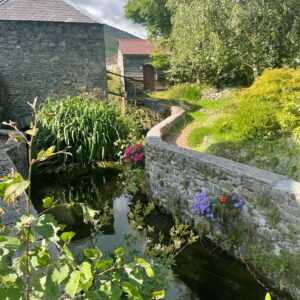Industrial Tweed
The Tweed and its landscapes have a rich industrial history, from early modern times to the 20th century. This strand of Uncovering the Tweed aims to highlight key industries and their impact on the region.
Medieval watermills, used for grinding grain and other purposes, mark the earliest industrial activity along the Tweed. Remnants of these mills, such as foundations and mill races, provide insights into historical technology and economy.
From the 18th century, the Tweed and its tributaries became famous for its woollen textile industry, particularly in towns like Peebles, Innerleithen, Walkerburn and Galashiels. Textile mills, powered by the river, and surviving mill buildings and workers’ housing reflect this period of industrial growth. You can explore mills in the Borders and beyond – 15,000 of them no less – via the Mills of Britain website linked below!
The 19th-century advent of the railway transformed the region, enhancing transport of goods and integrating the region with broader markets. Surviving railway structures, now often repurposed, illustrate this pivotal development.
This sub-project will be focused around the urban centres along the Tweed, recording the remains of industrial activity that still survive within these areas. This will include historic building recording workshops, photogrammetric and photographic records and will be supported by desk-based research including LiDAR assessment.
Research on the Industrial theme so far has comprised desk-based research, as well as survey at several sites including Innerleithen. One of the next steps will be undertaking further site visits to review and record industrial features using photography to update our understanding of these often overlooked structures.
Find out more about our recent work at Innerleithen via the link below.

